From streetwear to 'street couture': Hip-hop transformed fashion like no other before it
When the needle hit the records on DJ Kool Herc's turntable, launching hip-hop's start 50 years ago, the sound pushed a new culture into the arts, especially music and fashion.
Hip-hop's conversation with clothes can be seen in song titles: Think Run-D.M.C.'s sale-driving "My Adidas" and Migos' first hit song "Versace." But underneath the emerging music genre, style from communities of color on the East and West Coasts and in the South were brought to the mainstage of American fashion.
Airbrush artists made plain shirts and hoodies into bespoke pieces with unique colors and artwork. Rappers proudly wore their names on necklaces, rings and belt buckles. Brands not associated with music became hip-hop staples including Kangol and Adidas.
"Customization and personalization is like the essence of not only hip-hop fashion, but the spirit of hip-hop," Isabel Flower, co-author of "The Nameplate: Jewelry, Culture, and Identity” says. "(There is an) importance of expressing a singular identity in a way that no one else can or no one else has."

Hip-hop fashion was built on creativity, 'street couture'
Hip-hop's roots were planted among Black and brown working-class communities where Army surplus and workwear stores served items including camouflage fatigues, Dickies dungarees, Carhartt and Timberland. In hip-hop fashion's earliest iteration trends weren't set by the artist, the artists reflected their community.
"For me, it wasn't like there was an artist driving the fashion track. I think a lot of folks seem to forget that. Hip-hop is a culture," Elena Romero, co-author of "Fresh Fly Fabulous: 50 Years of Hip Hop Style" says. "We were all young kids. So many of us were just reinterpreting the styles that were popular at the time and we were just making them our own."
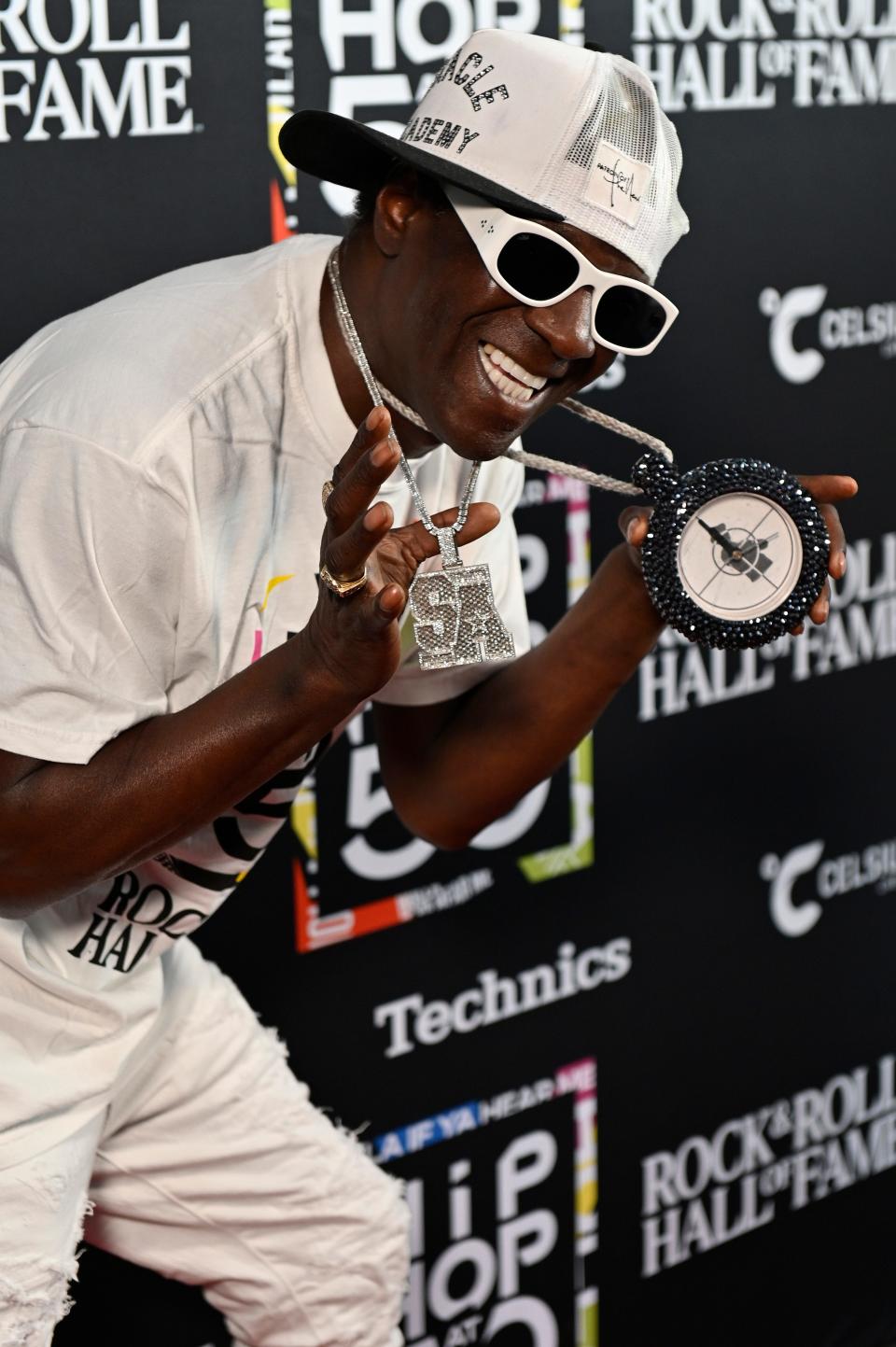
Today, customization among artists looks like drafted sketches from a luxury ateliers or an intricate design from a famed jeweler. But years ago it thrived at the base level.
Just C Greenidge, the creative director for Jay-Z's Roc Nation clothing label Paper Planes, recalls the early moments of hip-hop fashion when airbrushed shirts were a must-have clout item. But before heading up his own brand he mimicked the clothes he coveted with what he had.
"I started painting on clothes," Greenidge says. "I definitely didn't know anything about airbrush but I would go to my local art supply store, get acrylic paint and come home. Everybody wanted to be an individual, whereas now it's kind of like everyone searches for the same thing."
Famed designer Dapper Dan created custom looks for stars in the '80s in his 24-hour Harlem boutique offering hip-hop's leading voices custom looks using recreated luxury patterns from Louis Vuitton, Gucci and MCM.
His shop ran until 1992, when litigation over trademark infringement forced him to close. But his fashion impact was immortalized by being worn on the backs of LL Cool J, Salt-N-Pepa and recently Saweetie and Doja Cat for their "Best Friend" music video.
"The role that I play in hip-hop fashion is translating what the artist wants to say in terms of how you dress to make his look match his message. I love doing that," Dapper Dan, born Daniel Day, says. "I have collections, but I would never let the collections interfere with the couture (or) what I call 'Street Couture' or 'Us Couture.' "
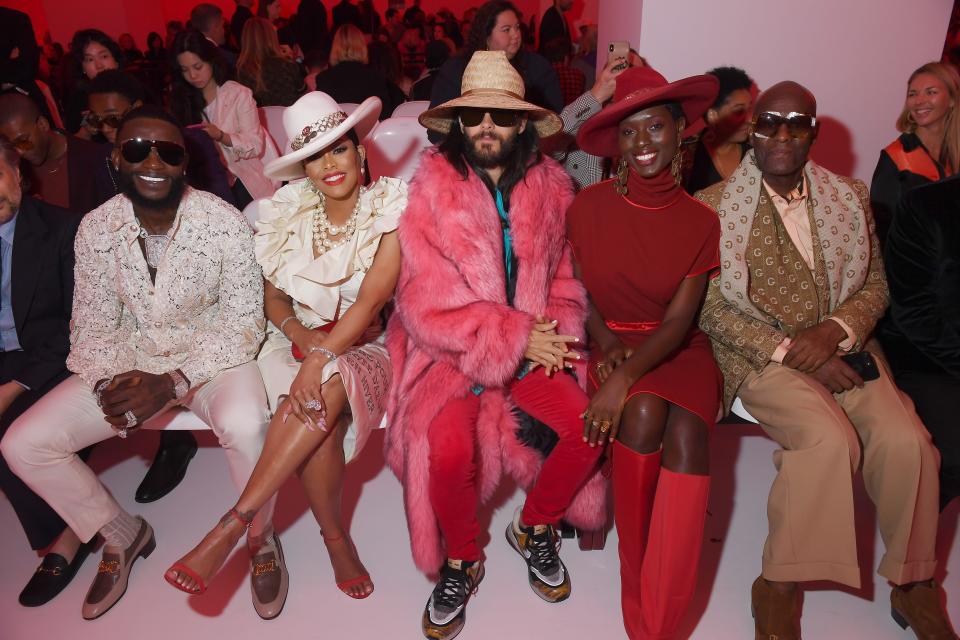
Hip-hop's personal style launches new fashion labels
As hip-hop became the music of popular culture in the '90s into the 2000s, many artists leaped from the mic to make their own fashion labels.
Wu-Tang Clan coined Wu Wear, 50 Cent added G-Unit to his empire and Sean "Diddy" Combs built Sean John, earning the hip-hop mogul the Council of Fashion Designers of America's menswear designer of the year award in 2004.
"Once these artists realized the power of their own celebrity, of themselves being a brand and realizing the kind of sales that happen at their concerts, (they wanted) to get more control of those dollars as well as their image," Romero says.
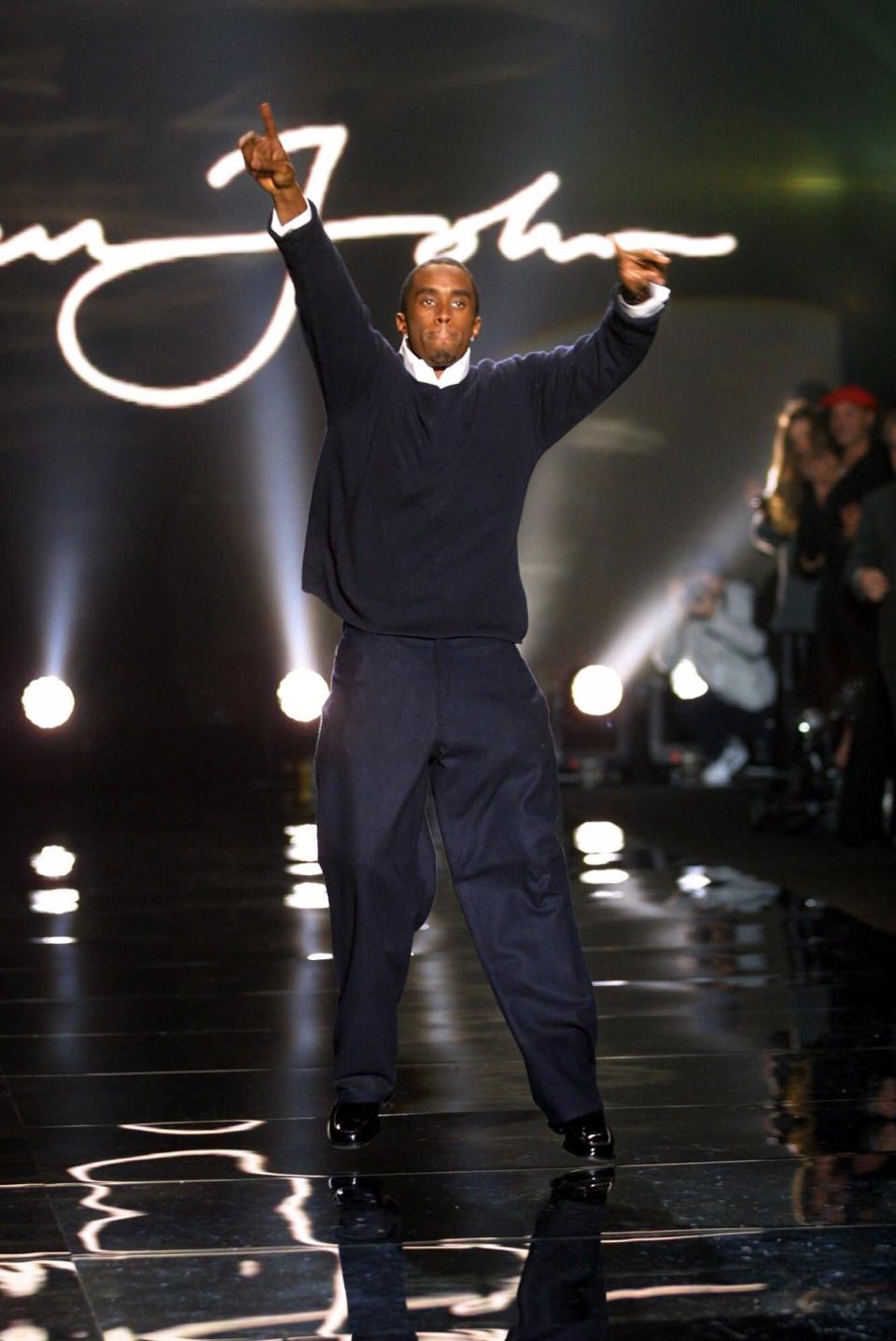
But it was harder to keep a brand going than it was to start one. Many gained fast traction at their height but didn't sustain popularity. Sowmya Krishnamurthy, hip-hop journalist and author of forthcoming book, "Fashion Killa: How Hip-Hop Revolutionized High Fashion" (out Oct. 10) says many of the brands crumbled because "the marketplace just became so oversaturated and a lot of the clothes weren't that different. If you have a sweatshirt where you swap out the logo, a T-shirt ... you can only sustain for so long."
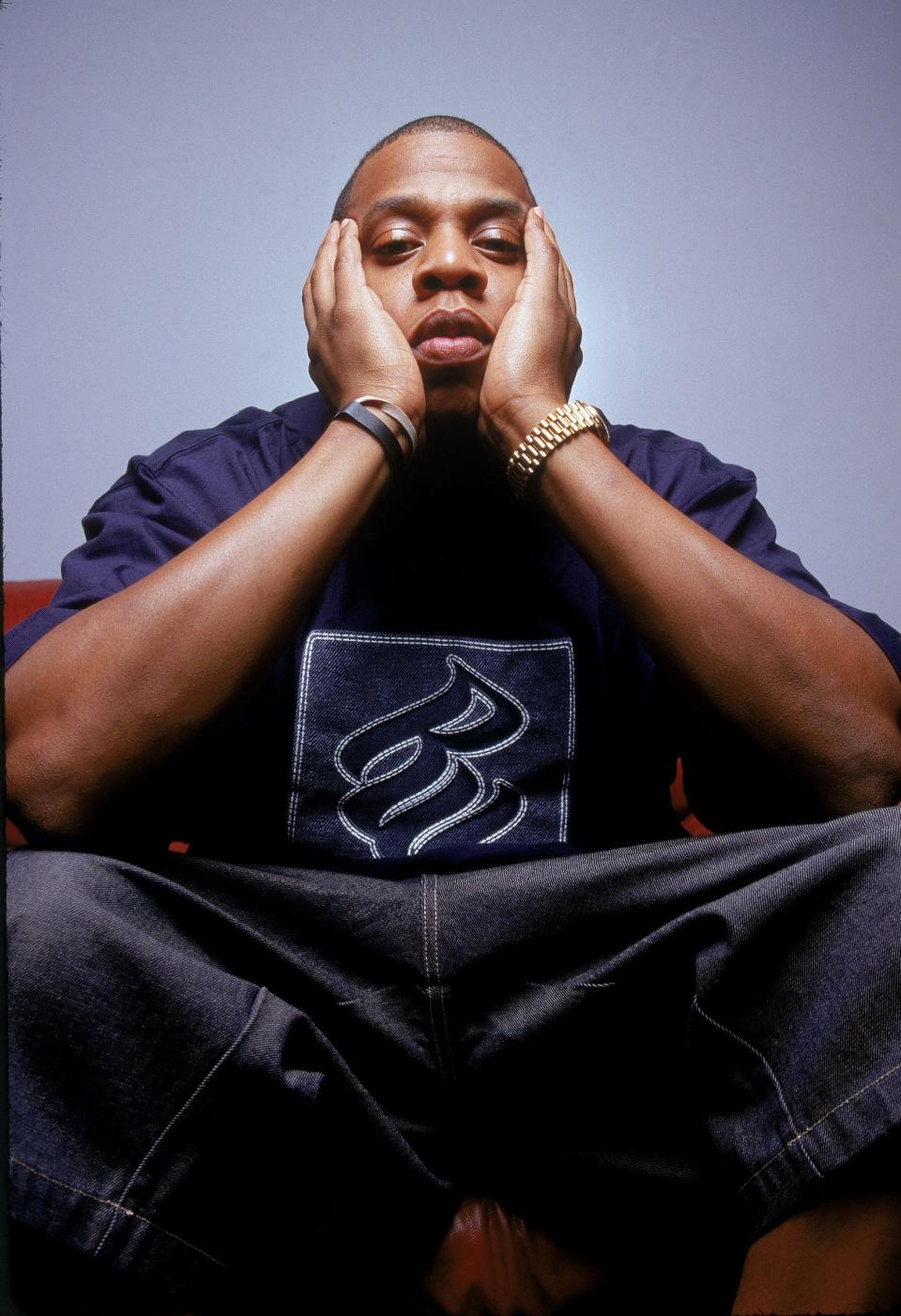
Greenidge was the outerwear designer for Rocawear, Jay-Z's first fashion venture in collaboration with Damon Dash, in 2006 and recalls being "around back then" and how the brand couldn't sustain its rapid 2000s popularity.
"With the skyrocketing growth of what the brand was able to do ... it was almost unmanageable to retain it and keep the trajectory," he says.
The culture becomes couture with hip-hop's runway treatment
Krishnamurthy says labels including Rocawear "came out of necessity" when mainstream fashion labels would turn away artists when they proposed partnerships. As "hip-hop became the new celebrity" the sentiment of fashion gatekeepers changed.
"Luxury brands and the status brands of the times had no choice but to embrace and endorse these new music personas," Romero says.
Modern-day fashion weeks see a heavy presence of hip-hop's rising and established stars.
"It's rappers sitting at the front row. Every year at the Met Gala people want to know what Cardi B is going to wear," Krishnamurthy says. "She's probably one of the most exciting figures within hip-hop. ... She's always experimenting and she's become really a mainstay of couture week."
Yet, before those seats were open. Hip-hop still sported luxury labels as a signal of status. Dan who "swagged out" many artist with Gucci symbols and custom leathers said hip-hop fashion is about "upstaging" your peers.
"You know if you got a Gucci jacket, OK, cool. Now, you got a Gucci outfit. Oh, man, you're really on now," Dan says.
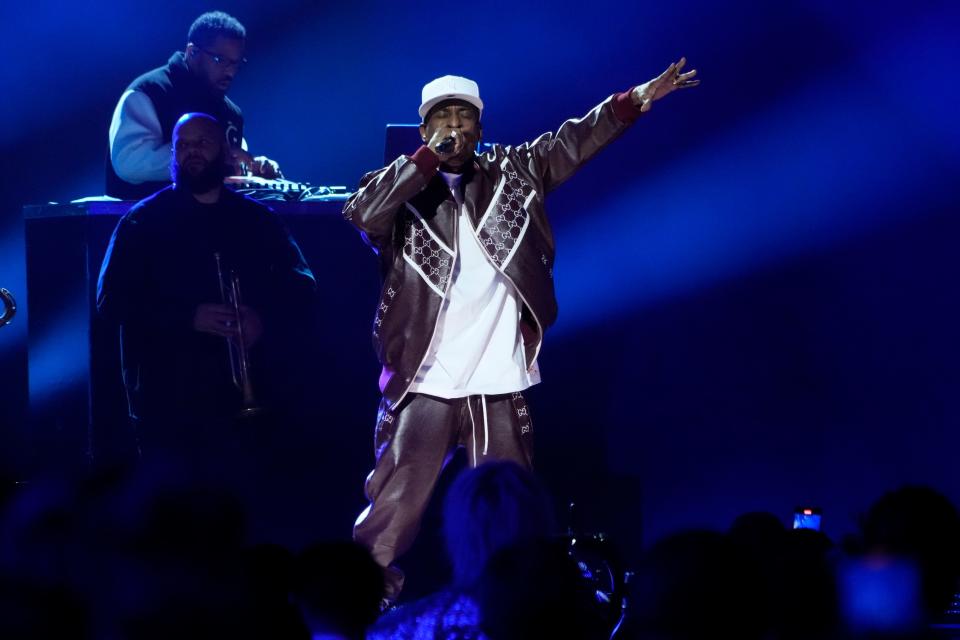
Despite several controversies within fashion, which led labels like Gucci and Balenciaga to be called out for appropriation, hip-hop also worked as a vessel for change.
"If it wasn't for hip-hop fashion, we wouldn't see the diversity on the runway. Where else did we see bodies in all sizes and different shades?" Romero says. "It was all coming from hip-hop culture, because our vision of beauty was very broad and very different than mainstream's vision of beauty."
How can hip-hop fashion can live on?
In February, Louis Vuitton named rapper, producer and mogul Pharrell Williams as the label's next menswear creative director. The move seemingly signaled a merge of hip-hop and fashion at one of the industry's highest peaks.
Pharrell's first show was chockful of hip-hop celebrity guests: Jay-Z performed at the afterparty, Beyoncé attended despite touring in Europe and Clipse duo Pusha T and No Malice walked the runway. The Louis Vuitton show was a display of hip-hop artists at the top, but for hip-hop fashion to endure the next 50 years, fashion experts say investments have to be made for the next generation.
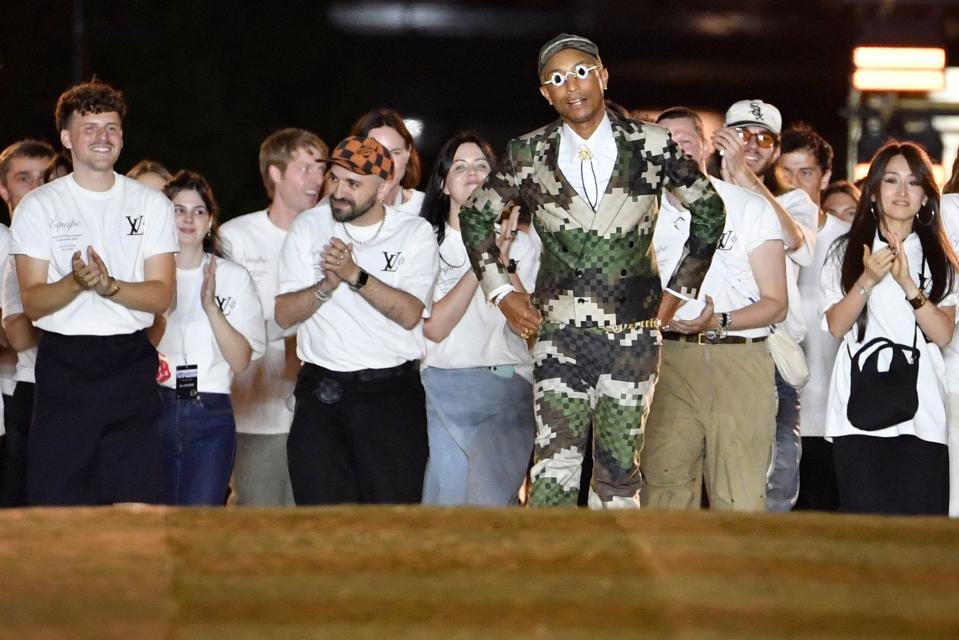
"We are full of talented, creative designers of color. But they still don't know how to get the financing capital," Romero says. "(It's) not simply just showing us that you have a celebrity endorsement. ... I think at some point, no matter who the designer is, the consumer is going to take them to task."
Krishnamurthy adds: "I would love somebody who came from hip-hop to have a namesake line that really stands the test of time. I think that would be a great sort of next milestone right for the next 50 years and beyond. "
This article originally appeared on USA TODAY: From Dapper Dan to Pharrell, hip-hop's transformative role in fashion
